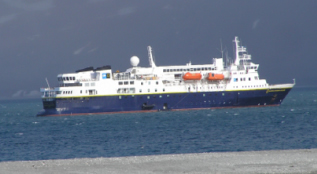On the Ship
The National Geographic Explorer, like many small cruise ships, has an "Open Bridge" policy that allows passengers to be on the bridge unless it interferes with operations. Neither Chuck nor Pat ever takes much advantage of that policy, as we aren't very interested in engineering or navigation and visits tend to be little more than a chance to ask a few technical questions.
But Pat discovered that the bridge of the Explorer was different and a great place to be. First of all, it is set up for visitors--there are places to sit (out of the way of the crew), binoculars and spotting scopes, and, of course, the best views. There were almost always naturalists there, engaged in friendly wildlife spotting competitions. It quickly became her favorite place to hang out.
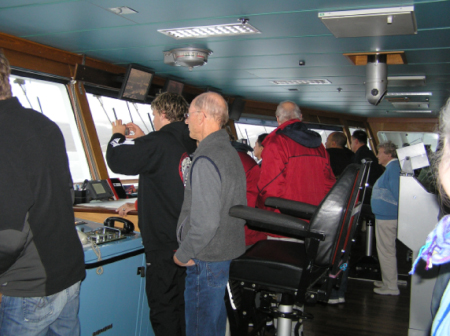 |
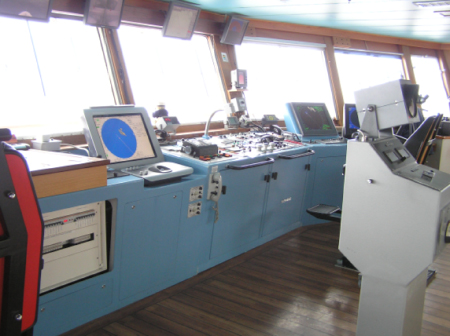 |
| When there was wildlife around the bridge could quickly become crowded. In fact, the Captain had a sign that he could carry in front of the crowd: "Navigation in Progress. Quiet, Please" if things got too noisy. | In quieter times, though, the Bridge was a relaxing place to sit, look at the water, and contemplate the infinite. The Captain, the First Officer, and the Second Officer (depending on whose watch it was) were always welcoming. |
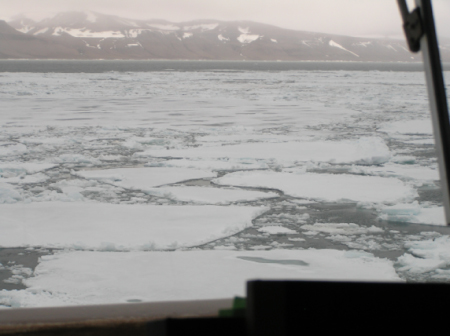
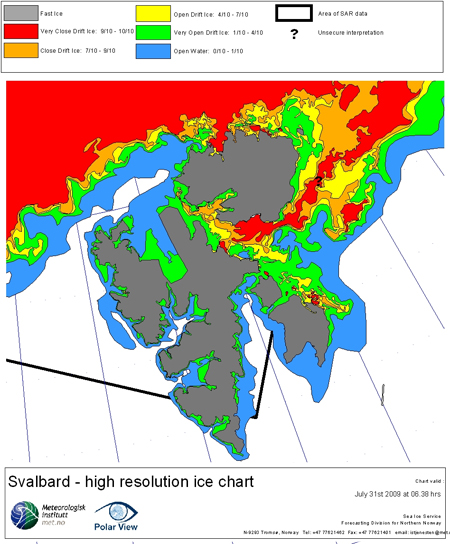 One of the really fun things to watch from the bridge was the ship going through drift ice. The ship is not an icebreaker (which can move through solid ice by breaking a path in it), but an ice cutter, which slices ice and pushes it out of the way (so there needs to be room for the ice to move out of the way). Every day the ship received an ice conditions chart like the one on the right here, color-coded to indicate how heavy the ice was all around the archipelago. However, conditions can change rapidly; one day when looking for fast ice (solid ice attached to land) to look for polar bears, the ship sailed to a place indicated on the map as having fast ice, only to discover than in the 12 hours since the map had been made, the ice had ENTIRELY disappeared from the coastline and there was nothing but open water.
One of the really fun things to watch from the bridge was the ship going through drift ice. The ship is not an icebreaker (which can move through solid ice by breaking a path in it), but an ice cutter, which slices ice and pushes it out of the way (so there needs to be room for the ice to move out of the way). Every day the ship received an ice conditions chart like the one on the right here, color-coded to indicate how heavy the ice was all around the archipelago. However, conditions can change rapidly; one day when looking for fast ice (solid ice attached to land) to look for polar bears, the ship sailed to a place indicated on the map as having fast ice, only to discover than in the 12 hours since the map had been made, the ice had ENTIRELY disappeared from the coastline and there was nothing but open water.
There were other such unexpected events--it was interesting to hear the Captain and the Expedition Leader discussing what to do when things weren't working out quite as planned.
The Whales
A big advantage to being on the bridge is that you get to see the wildlife before the general announcement is made. That was certainly true of our brief encounter with humpback whales--a mother and calf. They first came by around 11 pm; by the time the ship was close enough to make a general announcement, the whales were on the move again.
 |
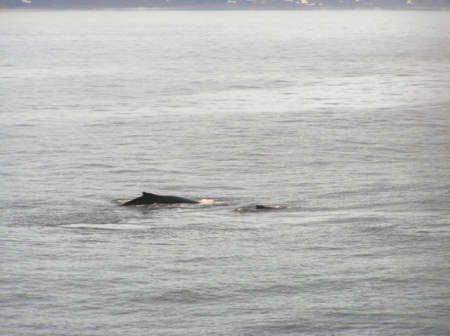 |
The furthest north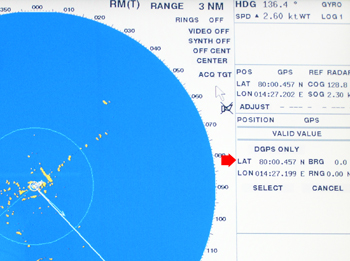
One thing a lot of people wanted to do was to go above 80° N latitude. When the cruise began it seemed unlikely that we would make that, due to heavy ice and a strong north wind. But when the weather changed (and the ice disappeared), we journeyed north and on the next-to-last evening of the cruise, while looking at walruses, we quietly passed 80°. There was an announcement on the bridge from the second officer and a cheer went up from the people there. Passing this mark meant that we were only about 690 miles from the North Pole--less than the length of California.

